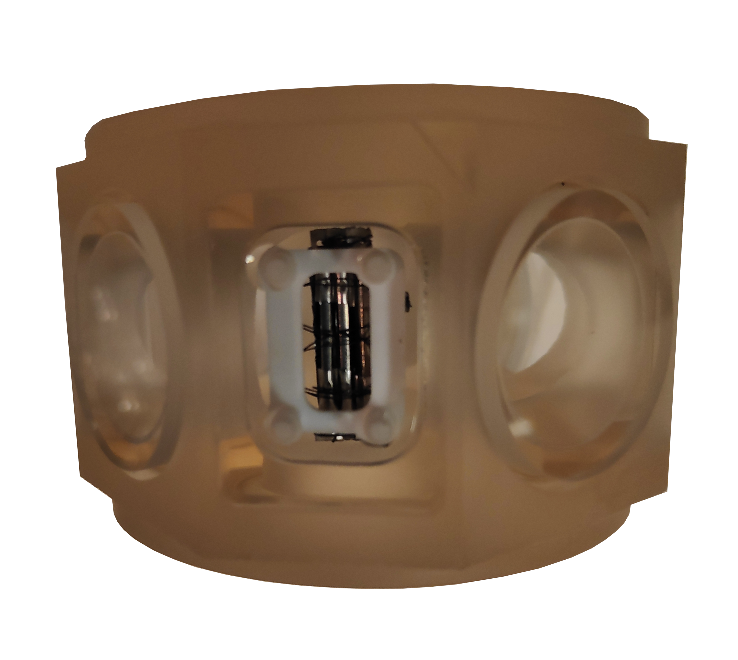Note: We currently have open positions for this project. Feel free to contact us at awenzlaw(at)uni-mainz.de. For further info, see here: PhD position
Introduction
Ultra-cold atoms are one of todays most anticipated objects of research, with applications ranging from inertia-sensing to gravitational wave detection. Most of these require optical systems for e.g. laser-cooling and sensing of the atoms, as well as vacuum systems to shield the sensitive atoms from the environment. In recent years, more and more experiments shifted from solely laboratory-based away to miniaturized field- and space-borne setups. This is especially useful for geodesy, accelerometers and atom interferometry.
Miniaturized optical systems were demonstrated in various experiments, as well as in previous works of this working group. Vacuum systems on the other hand mostly still consist of bulky commercial setups requiring a lot of space, as well as skilled personnel to be operated.
Zerovak

Prototype of a standalone Zerodur vacuum chamber with atomic sources and passive pumps
In a collaboration between UHH Hamburg and JGU Mainz, the DLR-funded project Zerovak aims to provide a novel approach of miniaturized Zerodur based vacuum systems for quantum technology applications. Born from the experience of using Zerodur as a material for compact optical systems, the motivation established to develop miniaturized vacuum systems made of Zerodur to create an unprecedented connectivity between optical and vacuum systems.
Such a system based fully on Zerodur would enable a homogenous, thermally stable and highly miniaturizable overall system without any mismatches in coefficients of thermal expansion (CTE).
An additional benefit of Zerodur as material of choice for vacuum systems is it being non-magnetic. Conventional types of atom chip traps face the problem of magnetic shielding or unwanted manipulation of magnetic fields due to metallic vacuum chambers. Zerodur based vacuum chambers not only eliminate this problem, but furthermore give possibilities to highly complex and three-dimensional trap wire structures embedded into the chamber walls, therefore not compromising the optical access of the chamber.
Project Goal
In the context of this project we aim to establish a fully integrated Zerodur vacuum chamber including atomic dispensers, passive non-evaporable getter vacuum pumps and high optical access for cold-atom experiments. To achieve this, the miniaturized Zerodur vacuum chamber is sealed inside a commercial vacuum system, while non-evaporable getters and dispensers are activated. As the first prove-of-concept, we want to use the Zerovak technology to demonstrate a magneto-optical trap with an overall system not bigger than a standard shoebox. For this task we aim for background pressures of around 10^-08mbar or lower.
Zerodur test chamber using a conical flange connection with epoxy adhesive sealing

In this context we investigate different epoxy adhesives, all passing NASA low outgassing standard ASTM E595. Those epoxies are used to seal flange connections, as well as windows sealings. The pressures achieved with our test chambers on commercial vacuum systems will later give us constraints of reachable pressures in the integrated chamber using the same sealing methods.
Since the integrated Zerodur chamber will not have access to commercial vacuum systems, its last window is sealed inside a vacuum chamber reaching desired pressures. Then, very carefully, the atomic dispensers and non-evaporable getter pumps are activated using UV-light, after which the chamber gets finally sealed.
As a last step, we want to combine the obtained vacuum technology with a miniaturized Zerodur based optical setup to achieve a magneto-optical trap in a highly compact and stable overall system.
